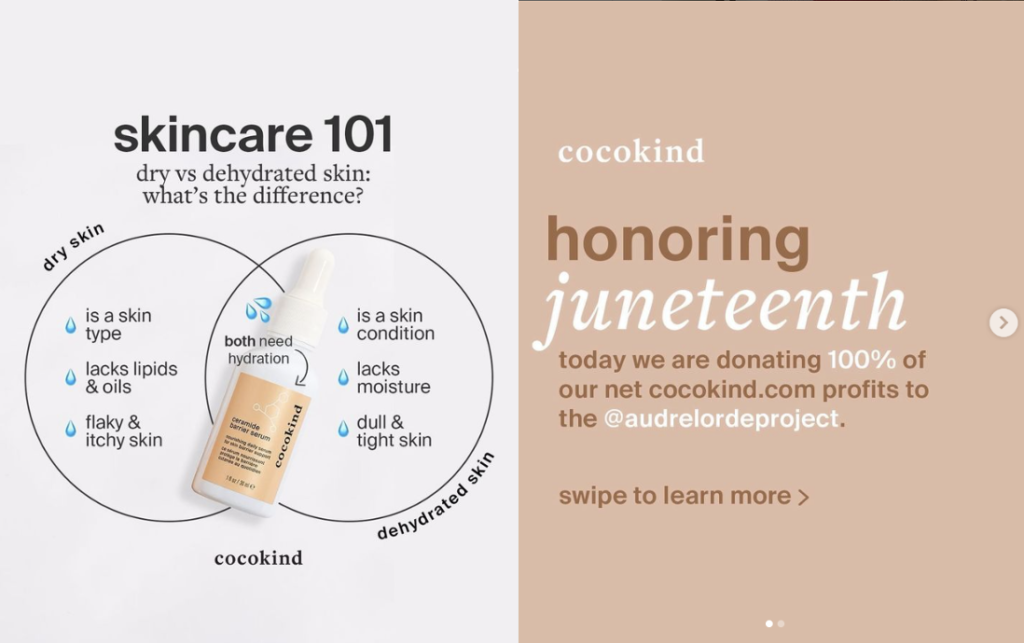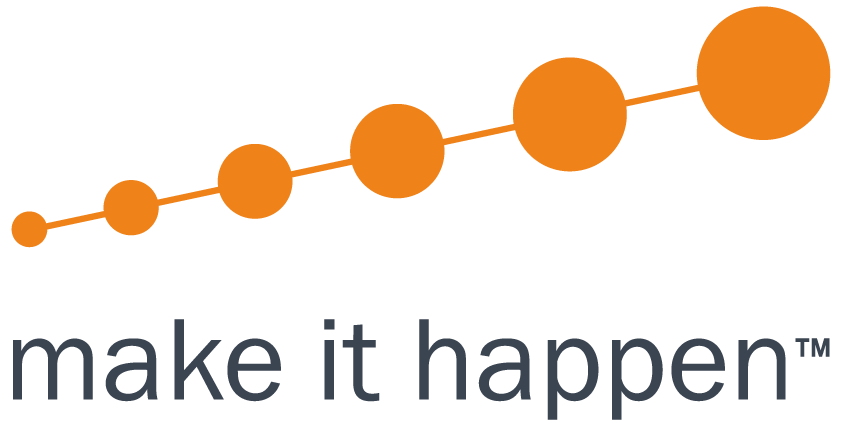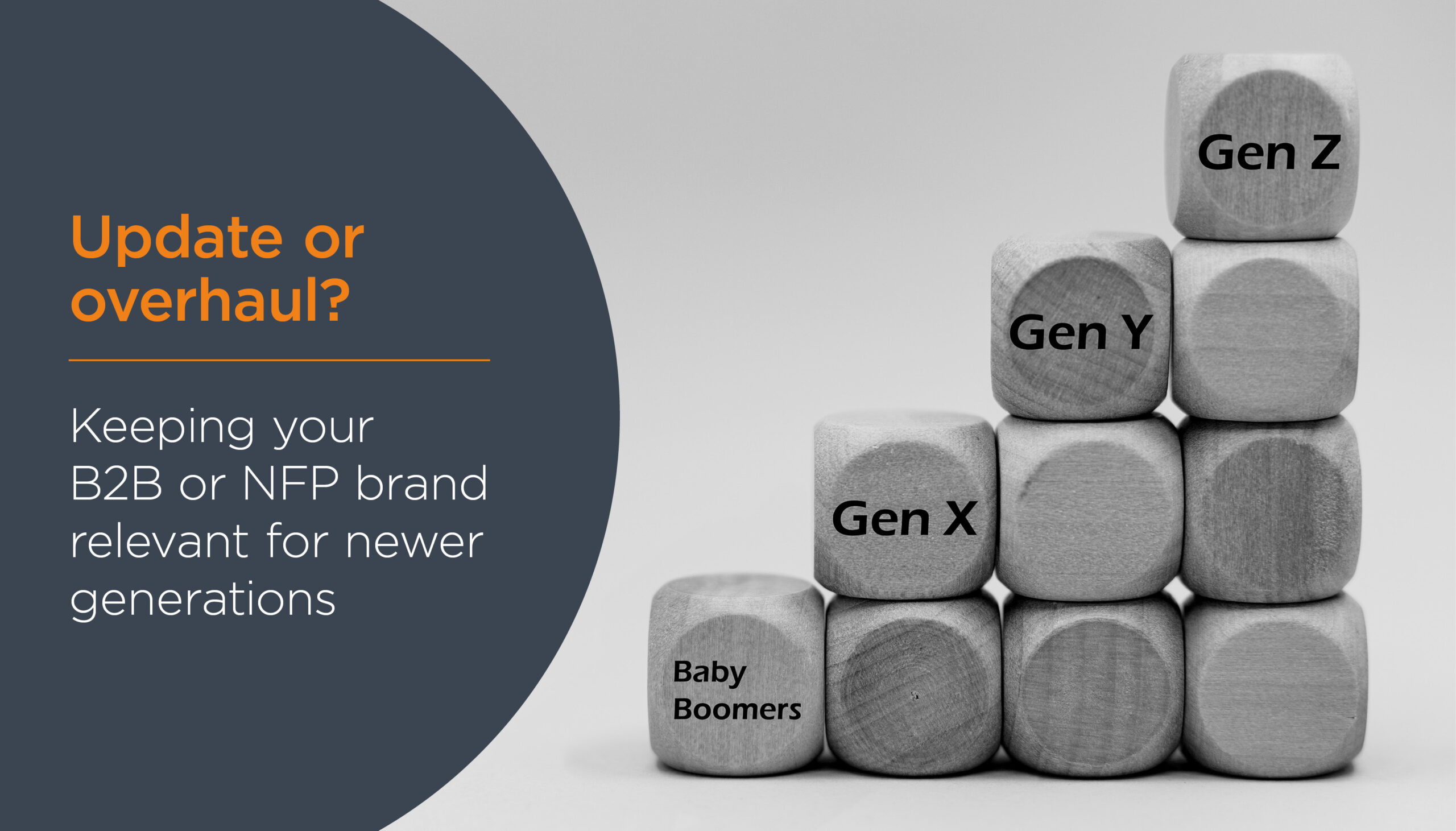Let’s face it, as a B2B or NFP organisation, you just can’t connect to newer generations the same way you once engaged with baby boomers.
In today's rapidly evolving market, brands have realised the need to shift their focus towards engaging Millennials and Gen Z. Although this doesn’t usually require a complete overhaul, brands who have repositioned themselves towards more relevant messaging have reaped the benefits.
To update your brand, understanding the newer generations’ unique values and behaviours is key, a practice that can and should be in constant development and flow.
This piece explores the significance of adapting to these demographic changes and provides practical strategies that you could use today to effectively reach younger audiences.
Understanding the Changing Demographics
Millennials and Gen Z now represent a significant portion of consumer and professional markets.
Australian census data from 2021 reveals that numbers of Millennials (25-39 years old) have caught up to Baby Boomers (55-74 years old) as the largest generational group in Australia. In the 1966 census, nearly two in every five people (38.5 per cent) were Baby Boomers.
This transition is more than just a shift in numbers. It’s a transformation in values and behaviours that profoundly impacts B2B and NFP brands.
Millennials and Gen Z prioritise authenticity, social responsibility, and easy technological integration. They’re digital natives who have grown up being able to instantly access information and today expect seamless online experiences.

(Source: Goldman Sachs)
They value brands that demonstrate ethical practices, transparency, and a commitment to social causes. Any brand or organisation that wants to stay relevant in today’s market needs to understand these essentials.
Evaluating your current brand elements
As a brand, there are always many elements that paint the whole picture of who you are and how you operate. It’s extremely important to evaluate your existing elements.
A comprehensive brand audit is a crucial first step.
This process involves assessing current messaging, visual identity, and overall brand perception to identify what resonates with both older and younger audiences.
Old Spice, a company known for male hygiene products, took brand auditing seriously and serves as an example of a successful brand update that saw their sales skyrocket.
Old Spice was known as an old man’s brand. Founded in 1934 by William Lightfoot Schiltz, the company had established itself as a household name, but with an ageing generation.
With young men seemingly not interested in buying their products at all, Old Spice had to do something, and so their Swagger campaign was born. They utilised tongue and cheek humour to engage with the younger demographic and saw their sales quadruple.
Using the momentum of their initial success, and integrating some savvy marketing research that revealed that 50% of their body wash sales come from women, they launched the “The Man Your Man Can Smell Like” campaign to address women directly.
From their website copy to their social media engagement and ad campaigns themselves, Old Spice’s new tone of voice was the driver to its brand update.
They didn’t need to change their products, but simply repositioned their brand by finding a new target audience and figuring out how to connect with them.
A cost-effective strategic refresh
Old Spice just showed us that refreshing a brand to appeal to Millennials and Gen Z doesn't necessarily require a complete overhaul. So how can you get great results without growing completely back to the drawing board? Through strategic and cost-effective investments that bring significant impacts.
Partnering with agencies that understand the nuances of your sector can help craft tailored solutions that resonate with younger audiences without breaking the bank.
In the case of Old Spice; they hired global agency Wieden + Kennedy that brilliantly took their brand to the next level.
Similarly, Make It Happen specialises in brand auditing and updating a brand’s communication and marketing strategies.
Our Place, a client of MIH, describes in their testimonial how our agency helped in their attempt to refresh and update their messaging: “There’s been a tendency for us to rely on verbal communication and more traditional print materials, but the work [MIH] has done on our website and infographics and visual representation has really lifted our thinking, challenge[ing] us to look at how we’re communicating.”
Engaging Millennials and Gen Z
Millennials and Gen Z are all about social media, and contemporary brands should leverage digital and social media platforms as much as they can!
Authentic storytelling and transparent communication are key to building trust and loyalty amongst a younger generation.
So what other examples do we have of brands successfully appealing to this newer demographic through social media?
Spotify has exemplified how utilising social media can lead to viral marketing amongst Millennials and Gen Z, through their Wrapped campaign. By leveraging user-generated content, Spotify was able to ignite a tide of participation and conversation online.

(Source: The Campus Agency)
Cocokind is another company that has experienced wide success with Millennial and Gen Z audiences. Known for their commitment of diversity in their products, staff and clientele, they’ve established themselves as a socially conscious brand, and use social media to post educational and socially responsible content:

(Source: Instagram)
Leverage your existing strengths
Remember. Updating your brand doesn’t mean changing everything.
Brands can also appeal to new audiences by leveraging their existing strengths, such as corporate social responsibility (CSR) initiatives and ethical practices.
Back to Old Spice: they built off of their Swagger campaign to launch the School of Swagger, a community mentorship initiative that helps young adults graduate high school and gives them the guidance they need to succeed.
Old Spice makes sure to mention that their social initiatives are nothing new:

(Source: School of Swagger)
Highlighting these aspects of a brand can showcase its commitment to positive impact and align with the values of Millennials and Gen Z.
Measuring success and continuous improvement
Let’s say you’ve just gone through the process of updating your brand. That’s great! But the journey doesn’t stop there.
Tracking the success of a brand refresh is just as vital for your continuous improvement. Setting measurable goals and key performance indicators (KPIs) allows brands to evaluate their efforts and make data-driven decisions.
Feedback from younger audiences is key in providing actionable insights for ongoing progress.
One crucial step you could take is implementing a feedback loop, where data and audience insights inform your continuous refinement.

(Source: Customerly)
Feedback loops ensure that brands remain agile and responsive to changing demographics.
Conclusion
Adapting to the evolving preferences of Millennials and Gen Z is not just an option anymore, it's key in ensuring your brand’s longevity and relevance.
By understanding these demographics, evaluating current branding elements, and strategically investing in refresh efforts, organisations can engage younger audiences without losing their core identity.
Start small, think strategically, and embrace the journey of continuous improvement.
Ready to make an impact? Start your brand refresh journey with Make It Happen. Contact us today for a free consultation!

